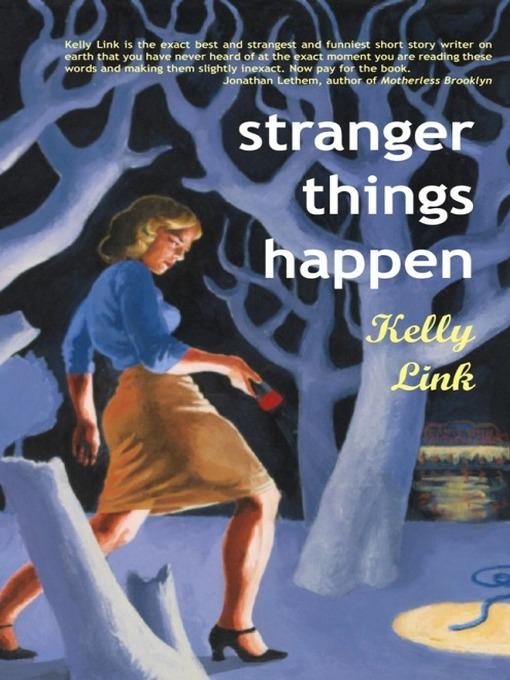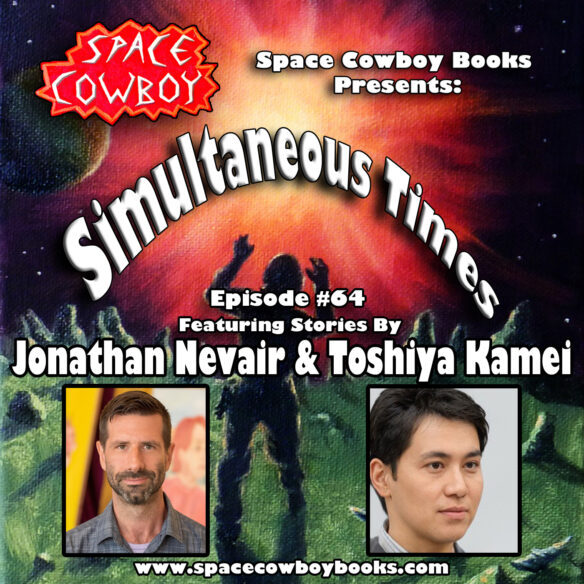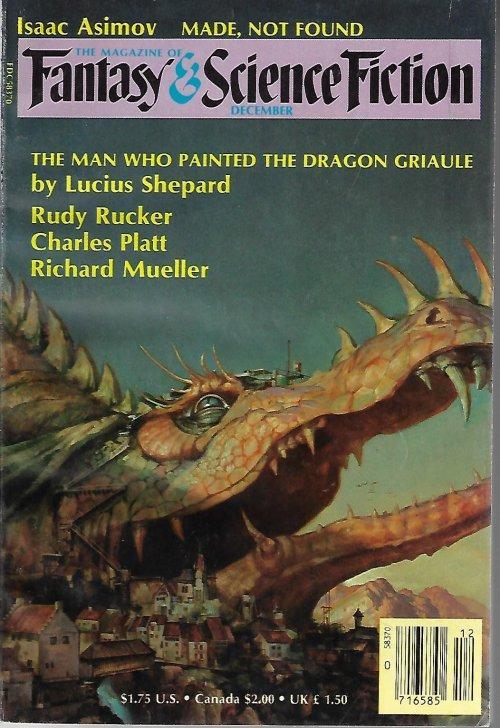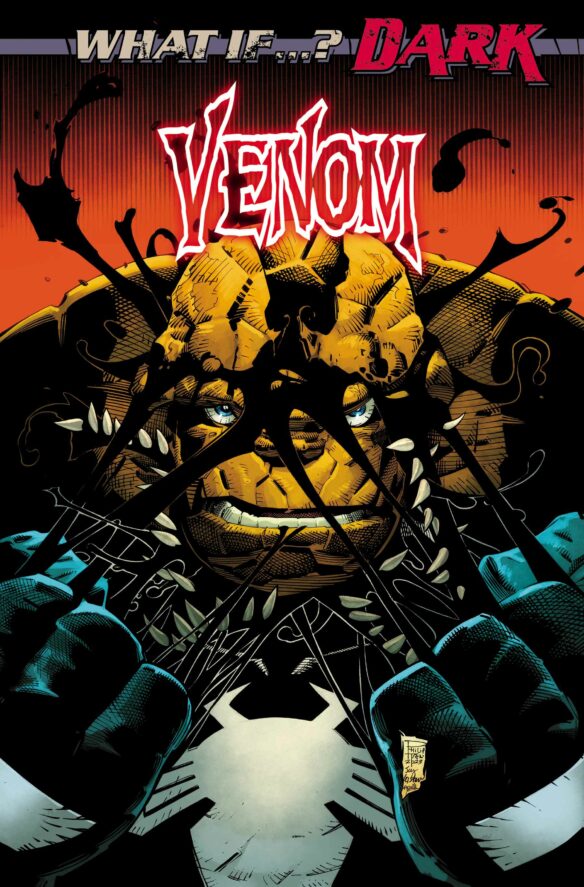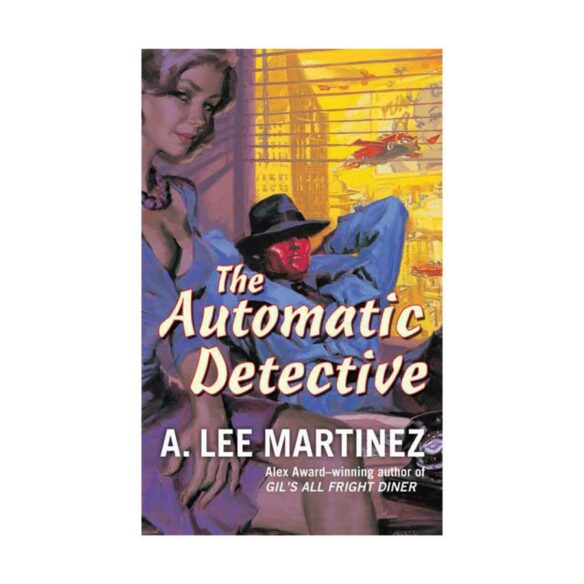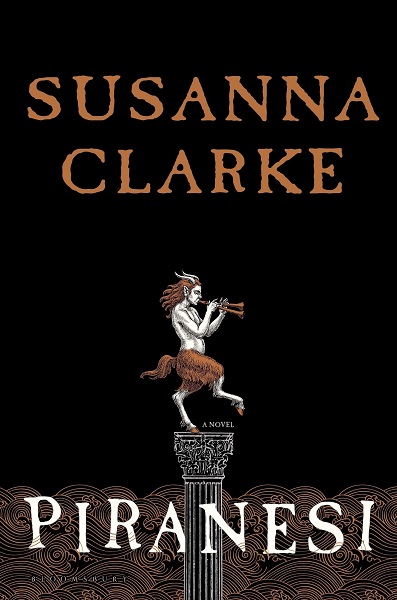(1) WANT TO HEAR SOME GOOD NEWS? In “Regarding Audible”, Brandon Sanderson reports progress has been made in moving audiobook distributors toward a fairer royalty structure. Work remains to be done, however.
…I’m happy to say that this stand has borne some fruit. I’ve spent this last year in contact with Audible and other audio distributors, and have pushed carefully–but forcefully–for them to step up. A few weeks ago, three key officers high in Audible’s structure flew to Dragonsteel offices and presented for us a new royalty structure they intend to offer to independent writers and smaller publishers.
This new structure doesn’t give everything I’ve wanted, and there is still work to do, but it is encouraging. They showed me new minimum royalty rates for authors–and they are, as per my suggestions, improved over the previous ones. Moreover, this structure will move to a system like I have requested: a system that pays more predictably on each credit spent, and that is more transparent for authors. Audible will be paying royalties monthly, instead of quarterly, and will provide a spreadsheet that better shows how they split up the money received with their authors….
Now, before we go too far, I do anticipate a few continuing issues with the final product. I want to manage expectations by talking about those below.
- What I’ve seen doesn’t yet bring us to the 70% royalty I think is fair, and which other, similar industries get.
- Audible continues to reserve the best royalties for those authors who are exclusive to their platform, which I consider bad for consumers, as it stifles competition. In the new structure, both exclusive and non-exclusive authors will see an increase, but the gap is staying about the same.
- Authors continue to have very little (basically no) control over pricing. Whatever the “cover price” of books is largely doesn’t matter–books actually sell for the price of a credit in an Audible subscription. Authors can never raise prices alongside inflation. An Audible credit costs the same as it did almost two decades ago–with no incentive for Audible to raise it, lest it lose customers to other services willing to loss-lead to draw customers over.
These are things I’d love to see change. However, this deal IS a step forward, and IS an attempt to meet me partway….
…Because of this, I will be bringing the Secret Projects to Audible very soon. I consider Audible to again be a positive force for the industry, and I have decided to shake hands with them. Audible has promised to release their new royalty system for all authors sometime in 2024, though I should be testing it in the next month or so….
(2) WOMEN’S PRIZE FOR FICTION. There is one work of genre interest on the Women’s Prize for Fiction longlist.
- The Blue, Beautiful World by Karen Lord, published by Gollancz
Click here for the complete longlist.

(3) ATTENTION AURORA AWARDS VOTERS. Members of the Canadian Science Fiction and Fantasy Association (CSFFA) can nominate for the 2024 Aurora Awards through April 6. Full guidelines at the link.
(4) GENRE ALL THE WAY DOWN. [Item by SF Concatenation’s Jonathan Cowie.] BBC Radio 4’s A Good Read this week devotes its first half to the book On Writing by Stephen King. Not only does it do what it says on the tin, there is even a plot twist at the book’s end with the reveal that the writing of this book was what enabled King to recommence fiction writing following a bleak period when his life came apart after an accident. (His wife comes out of this very well.)
Another book reviewed in the programme is firmly SFnal, it being the post-apocalyptic On The Beach. It’s just the book to read with Putin’s finger hovering over a big red button in the Kremlin.
The singer-songwriter Kathryn Williams loves books about the craft of writing and her choice of a good read is ‘On Writing: A Memoir of the Craft’, by the master of horror, Stephen King. The book gave her practical tools and advice which helped her to write her debut novel, The Ormering Tide. She also loves what we learn about King’s life – from his flatulent childhood nanny to the devastating 1999 accident which almost ended his life.
And the poet and novelist Andrew McMillan chooses On the Beach by Nevil Shute. In Australia, a group of people try to come to terms with the end of the world. A nuclear war has wiped out all life in the northern hemisphere and the radiation is drifting steadily south. What would you do if you knew that you, and everyone you know, had only months to live?
You can access the full programme at “A Good Read”.
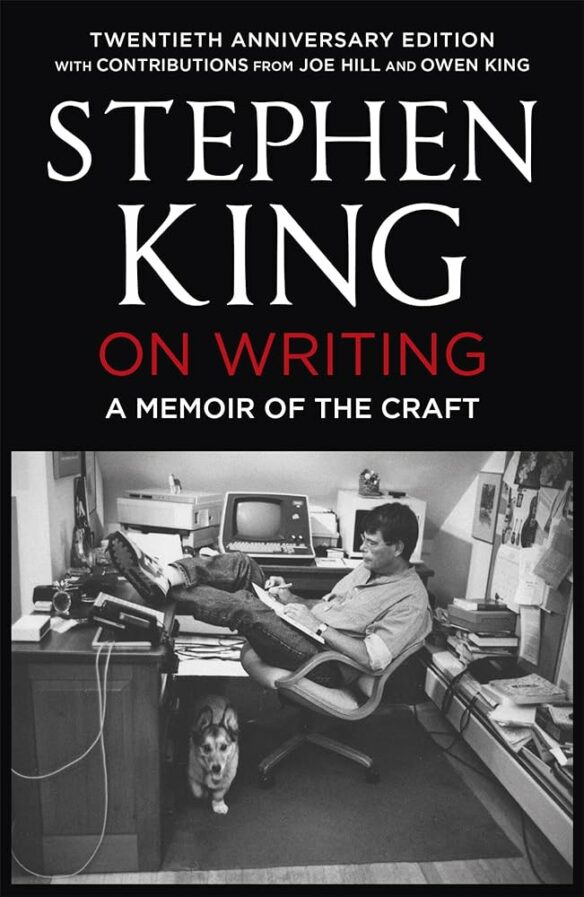
(5) HELP FIND IT. The Lost Universe is NASA’s table top role-playing adventure. Download it at the link.
A dark mystery has settled over the city of Aldastron on the rogue planet of Exlaris. Researchers dedicated to studying the cosmos have disappeared, and the Hubble Space Telescope has vanished from Earth’s timeline. Only an ambitious crew of adventurers can uncover what was lost. Are you up to the challenge?
This adventure is designed for a party of 4-7 level 7-10 characters and is easily adaptable for your preferred tabletop role-playing game (TTRPG) system.
NASA’s first TTRPG adventure invites you to take on a classic villain (while also using and learning science skills!) as you overcome challenges and embark on an exciting quest to unlock more knowledge about our universe. Download your game documents below and get ready to explore Exlaris!
From the game runner’s manual:
…The first part of the game is an introduction to the world, and the city the players find themselves in. During this portion of the game the players find themselves thrown into the bodies of the characters they created; they know what they would normally know on Earth but have no knowledge of the place they’re in. They won’t recognize each other and will have to tell the other players what they see when they look at them. However, they will intuitively know they have magical ability if they are a spellcaster and can learn how to channel that in early encounters in the game….
… The second part of the adventure is a journey outside the city to nearby ruins, where they will complete a skill challenge and encounter the dragon that was behind the disappearances. They must complete these challenges before they can recover the researchers and get home…

(6) AUNTIE ‘EM! “Scandal in Oz: Was ‘Over the Rainbow’ Plagiarized?” Did cousin Judy sing a stolen song? The Hollywood Reporter takes the case.
Norwegian pianist Rune Alver carefully unfolded the brittle sheet music and began caressing the keys of the baby grand. He had found the classical piece buried in an archive and believed it hadn’t been heard in maybe a century. But as he delved into the second section, Cantando, he felt a shiver run down his spine. The melody wasn’t just reminiscent of something he’d heard before — it was iconic. He instantly recognized the unforgettable, yearning opening notes of “Over the Rainbow,” the Academy Award-winning anthem Judy Garland performed in The Wizard of Oz, perhaps the most famous song to come out of Hollywood. How could this be? The sheet music was dated 1910, and The Wizard of Oz premiered nearly 30 years later. But the melody hung there (“Somewhere over the rainbow, way up high …”). It was hauntingly similar. Too similar, he thought.
About 10 years ago, Alver, now 67, was researching the works of a Scandinavian composer named Signe Lund when he made this disturbing discovery. In the late 19th century, Lund had been the toast of Oslo and went on to a successful career in the United States, before her Nazi sympathies late in life turned her into a pariah. She was now long forgotten. It was at an archive in Bergen, Norway, that Alver unearthed the pages of her composition titled “Concert Étude, Opus 38,” which she had written in the United States and copyrighted in Chicago in 1910 during one of her visits to America. Lund had performed the piece in many American cities. It was “the most popular of her pieces” in her lifetime, Alver says.
The similarities between Lund’s “Opus 38” and composer Harold Arlen and lyricist E.Y. “Yip” Harburg’s “Over the Rainbow” cannot be dismissed. Though there are notable variations (the former is in a minor key, for example, and follows a different time signature), the melodies of the main themes are nearly identical. Decades after the deaths of Arlen and Harburg, it is impossible to unequivocally determine whether the similarities are unintended or deliberate — a notoriously difficult thing to prove even when all participants are living. But to Alver, who included “Opus 38” on his 2020 CD Étude Poétiques: Works by Signe Lund, there is no debate about it. “Of course it is plagiarism,” he says today. Given the sacred aura that surrounds “Over the Rainbow,” the accusation borders on the blasphemous, akin to smudging the Mona Lisa. Yet Alver has no doubt that Lund’s DNA can be found in Harold Arlen’s melody…
…As an unabashed fan of Arlen and Oz, [composer Stephen] Schwartz concedes there are undeniable commonalities between Lund’s and Arlen’s compositions, but adds, “If this was a different composer or in different circumstances, I might be a little more suspicious of something untoward having occurred here, but I think it’s extremely unlikely.”
Schwartz is not the only one whose ears pricked up when they first heard the Cantando to Lund’s “Opus 38.” Michael Feinstein, the polished pianist and recording artist who founded music-preservation nonprofit The Great American Songbook Foundation, recognizes the likeness as well. “Well, it’s very similar, of course, to ‘Over the Rainbow.’ But there are only 12 notes on the piano,” he explains. “My take on it is that Harold never would have knowingly stolen anything. It’s not hard to prove any theory when it comes to music. There is a famous saying that ‘plagiarism is copying without inspiration, and inspiration is plagiarism without getting caught.’ ”…
(7) LEGACY. “John Williams Reflects on Oscar Noms, ‘Star Wars,’ Spielberg Collabs” in Variety.
Harrison Ford can’t escape the two-and-a-half-minute fanfare that John Williams composed for his most famous cinematic hero, Indiana Jones. “As I often remind John, his music follows me everywhere I go — literally,” Ford says. “When I had my last colonoscopy, they were playing it on the operating room speakers.”
Creating those big, bold, brassy musical moments has become Williams’ trademark over his seven-decade career. Without his symphonic genius, some of the most indelible images in movie history — from E.T.’s flight across the moon to the ravenous shark zeroing in on an unsuspecting swimmer — would have lacked their singular power.
This year, Williams is resetting the record books again with his Academy Award nomination for best original score for “Indiana Jones and the Dial of Destiny.” It’s his 54th nomination, which is the most ever for someone not named Walt Disney, and thus the biggest tally for any living person — and any nonproducer, period.
“People ask about a legacy,” Williams says as he sits in the Amblin screening room on the Universal lot, adjacent to his bungalow office. “If I could be remembered as someone who did his job well and remembered as a good solid musician, I would rest very happily.”
(8) SIGNAL FADE. AP News says, “They are TV’s ghosts — networks that somehow survive with little reason to watch them anymore”. Has it been that long since I watched the USA Network just to see Tadao play “Shake Hands Man”?
…Few cable and satellite networks are a force anymore, the byproduct of sudden changes in how people entertain themselves. Several have lost more than half their audiences in a decade. They’ve essentially become ghost networks, filling their schedules with reruns and barely trying to push toward anything new.
Says Doug Herzog, once an executive at Viacom who oversaw MTV, Comedy Central and other channels: “These networks, which really meant so much to the viewing public and generations that grew up with them, have kind of been left for dead.”…
…Cable TV primarily took flight in the 1980s, breaking the iron grip of ABC, CBS and NBC. Essentially the first fragmentation of media, cable brought people with common interests together, says Eric Deggans, NPR television critic.
“People who were previously marginalized by the focus on mass culture suddenly got a voice and a connection with other people like them,” Deggans says. “So young music fans worldwide bonded over MTV, Black people and folks who love Black culture bonded over BET, middle-aged women bonded over Lifetime and fans of home remodeling convened around HGTV and old-school TLC.”…
…Now MTV is a ghost. Its average prime-time audience of 256,000 people in 2023 was down from 807,000 in 2014, the Nielsen company said. One recent evening MTV aired reruns of “Ridiculousness” from 5 p.m. to 1:30 a.m.
The general interest USA Network’s nightly audience tumbled 69% in the same time span, and that was before January’s announcement that viewer-magnet “WWE Raw” was switching to Netflix.
Without favorites like “The Walking Dead” or “Better Call Saul,” AMC’s prime-time viewership sunk 73%. The Disney Channel, birthplace to young stars like Miley Cyrus, Hilary Duff and Selena Gomez, lost an astonishing 93% of its audience, from 1.96 million in 2014 to 132,000 last year….
(9) MICHAEL LANGFORD (1955-2024). Longtime Georgia fan Michael Nathan Langford died March 5 at the age of 69. The family obituary is posted on Legacy.com. (No relation to the editor of Ansible that we’re aware of.)
…He was an entertainer and cabaret host for WHOlanta, and also worked as a writer and actor for the Atlanta Radio Theater Company and Sketchworks Comedy. He was an avid chess player and enjoyed attending and performing at DragonCon. He was preceded in death by his parents, Nathan Davis Langford and Patricia Ann Crocker Langford; and his partner of 21 years, Kim Holec….
(10) TODAY’S BIRTHDAY.
[Written by Cat Eldridge.]
Born March 6, 1957 — Ann VanderMeer, 67. Ann VanderMeer was the fiction editor for Weird Tales magazine until Marvin Kaye purchased it. While she and Stephen H. Segal were editing it, they won a Hugo Award for Best Semiprozine. It was also nominated for a World Fantasy Award.

She edited as Ann Kennedy The Sterling Web which would become The Silver Web zine from the late Eighties to the beginning of this century.
Her latest major ongoing editing endeavor is what is now Reactor, ‘til recently Tor.com. She’s been there for a decade now. She and the other Senior Editors have put together The Best of Tor.com anthology series.
Steampunk and Steampunk II: Steampunk Reloaded, edited with her husband of over 20 years, Jeff VanderMeer, and published by Tachyon, are simply excellent. There are writers that I know with a sprinkling of not so recognizable writers. The thirdl, Steampunk III: Steampunk Revolution, I’ve not yet read.
I am going to single out just one more work she edited, again with her husband, as it’s just awesome — The Thackery T. Lambshead Cabinet of Curiosities.
Lambshead was a man who enjoyed lending out his acquisitions but it is suspected by many that he held the strangest pieces of his collection in an underground lair only he could enter. And these pieces are now written about by such writers as Holly Black, Neil Gaimain, Mike Mignola (there are many illustrated pieces here) and China Mieville to name but a very few.
And here’s a sample from one of those entries.
1929: The Singular Taffy Puller
As Told to N. K. Jemisin
I had traveled far—along the bustling coast by rail, then across the Atlantic by steamship, at great expense, I might add—on a matter of pride. Or, more specifically, dessert. You see, the cobbled and sweaty streets of my city would reek but for the exquisite aromas that offer relief from horse manure and overindulgence. Wrinkle your nose and you might miss the scent of the most delicate amaretto fondant, or creamy divinities solidifying to tooth-tenderness. And when the pecan harvest is brought—ah, me! You never tasted pralines like mine.
But those selfsame streets are crowded with eateries these days, and an old octoroon spinster looking to make a name for herself must employ more than the braggadocio that paler, maler chefs may indulge. Especially given that, of late, my business had suffered by its proximity to a flashy new restaurant next door. It was for this reason that I traveled to the house of the esteemed doctor, and was ushered into the renowned cabinet, so that I could at last behold the item that might—I hoped— save my business.
On entry to the doctor’s home, I was momentarily stunned by the profusion of wonders within. These included the cabinet itself: a room of what had been handsome walnut wainscott and elaborately worked moulding (French rosettes and Egyptian cartouches, of all the mad combinations), though the lingering evidence of half-finished reorganization obscured the best of it. What remained of the chamber’s treasures had been tossed, with no apparent regard for further cataloguing or even convenience, onto bookshelves, plinths, and racks, which quite crowded the space….
(11) COMICS SECTION.
- Brewster Rockit lets you eavesdrop on an argument from the future.
- Free Range – you know the phrase, you just didn’t know it was a prank.
- Speed Bump demonstrates a continuing “problem”. (Well, not all of us think it’s one.)
(12) MUTANT MILESTONE. This June, creators from the X-Men’s past, present, and future come together to bid a final farewell to the Krakoan Age in X-Men #35, the milestone 700th issue of Uncanny X-Men. The issue will feature an epic-length story by writers and artists who shaped the Krakoan Age including Gerry Duggan, Kieron Gillen, Al Ewing, Lucas Werneck, Joshua Cassara, and more. The giant-sized issue will also feature a story of family by X-Men master Chris Claremont and offer a glimpse of things to come in the new X-Men titles launching this summer.
Check out artist Pepe Larraz’s wraparound cover below.

(13) GIFT ECONOMY FANFIC BINDERS. In Atlas Obscura’s report on “The Emerging Art of ‘Fanbinding’” they interview people who are binding fanfic – but not for profit, in contrast with some others who made the news a few weeks ago.
THE IDEA FIRST CAME TO Tiffo while they were volunteering at a local nonprofit writers’ league. In addition to that, they’d been active in online fanfiction communities for years, cheering on fellow writers who published their work digitally, sometimes at novel-length (or longer!), entirely for free. Members of both groups of writers were always excited to share their work with the world—but there was one key difference. “People I knew from the writers’ league got to walk up and go, ‘Look at my book,’” Tiffo says. “I got to hand it to them and say, ‘Sign your book for me.’ It’s beautiful to have that moment, to get to see the things that people worked so hard on become a physical thing.” And then they thought: Fanfiction authors work just as hard on their stories as any other kind of writer. Why couldn’t they have that same experience?
Tiffo looked up bookbinding tutorials to create their first physical fanfic artifact: a pair of anthologies of their best friend’s Doctor Who stories. (Since their friend often wrote about the character Rose, Tiffo even cross-stitched a galaxy-patterned rose for one of the covers, probably the last time they’ll cross-stitch for a book, they joke. But you never know.) They fell in love with the act of physically making books, but felt certain they couldn’t be the only one excited by the idea of binding fanfiction specifically. The internet was there to help: They found the term “fanbinding”—and, more importantly, the Renegade Bindery….
…“I recently bound a Witcher fic, set in Kaer Morhen during the winter, that featured a cerulean blue jacket, so it’s bound in a blue to match, with blue drop caps in a middle ages–style font alongside woodcut prints of wolf cubs playing,” says Des. For a Mo Dao Zu Shi fic (based on the popular Chinese novel and telelvision series), she made hexagrams from the text of the I Ching; for a Star Wars fic, she played with the aesthetics of Jedi temples….
…This DIY spirit aligns with Renegade’s commitment to the fannish gift economy, the ethos that underpins the largely non-monetized fanfic world. Renegade’s members don’t charge money for their labor, though they might ask a recipient to help with material costs. Des helped write these values into the Code of Conduct, which members agree to when they join the Renegade Bookbinding Guild. Binders generally get permission from the authors whose fic they’re binding, and that mutual respect extends to keeping binding free….
(14) ANTHROPOCENE CANCELED! “Proposal to mark a new chapter in Earth’s history will ‘go no further,’ scientists say” – CNN explains.
Scientists have voted against a proposal to declare a new geological epoch called the Anthropocene to reflect how profoundly human activity has altered the planet.
The proposal was rejected by members of the Subcommission on Quaternary Stratigraphy, which is part of the International Union of Geological Sciences, according to three voting members of the subcommission contacted by CNN Tuesday.
The vote followed a 15-year process to select a geological site that best captures humanity’s impact on the planet. The international union’s Anthropocene Working Group, which spearheaded the effort, made a July 2023 announcement that identified the location as Crawford Lake in Ontario because of the way sediment from the lake bed reveals the geochemical traces of nuclear bomb tests, specifically plutonium, from 1950.
The vote was not unanimous, said Kim Cohen, an assistant professor of geosciences at Utrecht University in the Netherlands and a voting member of the subcommission.
“There were some abstainees. There was a minority of yeses to a majority of nos,” said Cohen, who voted in favor of the proposal.Phil Gibbard, a professor emeritus of quaternary paleoenvironments at the Scott Polar Research Institute at the University of Cambridge in the United Kingdom, and a voting member of the subcommission, said that the “proposal for a formal Anthropocene was rejected by a 66% vote.”
(15) ONE IS COOL, THE OTHER IS GHASTLY. Ghostbusters News claims “AMC Theatres unveils exclusive Ghostbusters: Frozen Empire collectibles”. Learning from the promoters of Dune, AMC theaters will be offering a Ghost Trap popcorn container to those who buy tickets to the forthcoming Ghostbusters sequel. However, they say AMC has pulled its plans for the Slimer popcorn container.


(16) RAILROADING TIME. Brick Technology gives a lesson in “Building a Cat-Sized Lego Train”. Technology purr-fected!
Building an RC Lego train that cats can ride in with 3D printed rails and wheels. My 2 cats Cookie and Muffin are tired of walking, they’d rather travel by Lego train. Lego isn’t designed for building a large train that can carry cats because it lacks large wheels and rails for smooth movement. To solve this, 3D printing was used to create these parts. The rail switches use magnets or rubber for automatic changing. The bogies have a suspension system to handle uneven tracks and curve tilts, with each wheel powered by a strong, compact Lego L motor. The axles are made of aluminium to avoid bending under the weight. The bogies feature an automatic coupling system like those in American trains, which can be opened using air pressure. The train’s frame is flexible and only sturdy when combined with the outer shell, it keeps the train low for easy boarding. This frame also contains pipes for door operation and coupling, along with wiring for non-Lego LED lights. The train is powered by 3 Lego Powered Up hubs, allowing for extra sensors to automate the train further. The carriages are designed like trams, the only type suitable for transporting cats, as the cat’s weight helps with wheel-rail friction. A standard locomotive would need to be very heavy to pull cat-filled carriages. The train has an open roof for quick cat exits.
(17) VIDEO OF THE DAY. “Frank Herbert Explains the Origins of Dune (1969)” – let Open Culture introduce the interview.
Dune: Part Two has been playing in theaters for less than a week, but that’s more than enough time for its viewers to joke about the aptness of its title. For while it comes, of course, as the second half of Denis Villeneuve’s adaptation of Frank Herbert’s influential sci-fi novel, it also contains a great many heaps of sand. Such visuals honor not just the story’s setting, but also the form of Herbert’s inspiration to write Dune and its sequels in the first place. The idea for the whole saga came about, he says in the 1969 interview above, because he’d wanted to write an article “about the control of sand dunes.”…
[Thanks to Mike Kennedy, Andrew Porter, John King Tarpinian, Steven H Silver, Rich Lynch, Moshe Feder, Kathy Sullivan, Chris Barkley, Cat Eldridge, SF Concatenation’s Jonathan Cowie, and Steven French for some of these stories. Title credit belongs to File 770 contributing editor of the day David W.]


